Innovative technologies and applications of artificial intelligence
Date and place: 28 February 2025, Akademia WSEI, Lublin, Polska
🌐 Conference website: https://nx365.ai/warsztaty/
🎥 Conference recordings are available on YouTube:
On February 28, 2025, the first workshop entitled “Innovative Technologies and Applications of Artificial Intelligence” was held at the WSEI Academy in Lublin. This event, organized by the WSEI Academy, the Netrix S.A. Research and Development Center and the Information Technology Research and Development Center, created a unique platform for exchanging knowledge and experiences in the dynamically developing field of artificial intelligence.

The main goal of the workshop was to present the latest research achievements in AI technology, discuss the development of artificial intelligence algorithms and their practical application in innovative business solutions.
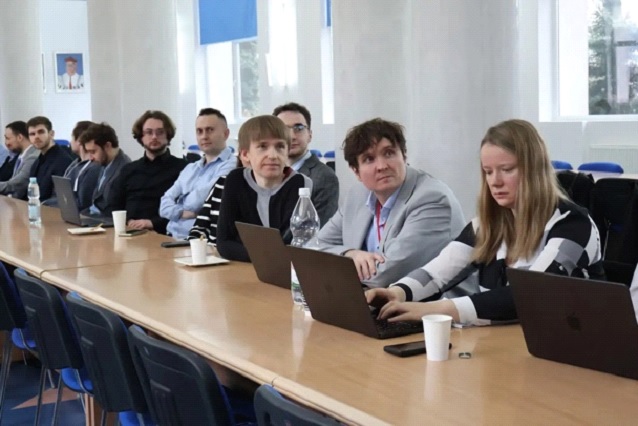
The conference was divided into a lecture part, led by recognized specialists, and scientific sessions, during which academics, PhD students and representatives of R&D centers and companies presented their achievements. The event was attended by over 50 participants, including experts, researchers and practitioners related to the development of artificial intelligence.

The inaugural lecture by prof. Tomasz Rymarczyk concerned current challenges and prospects for the development of artificial intelligence and innovative technologies.
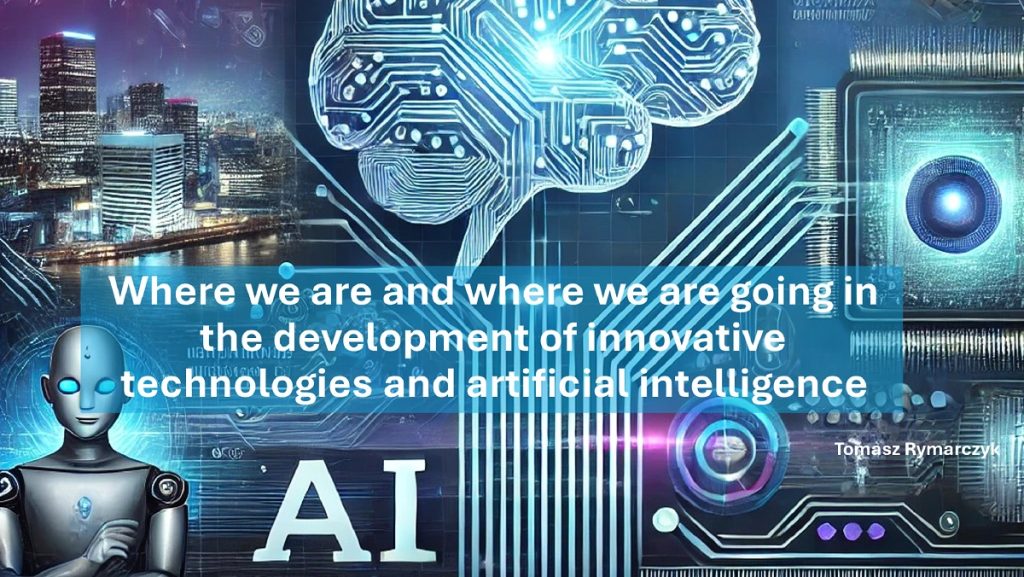
The speaker discussed contemporary technological trends, covering areas such as sensors, automation, IoT, Industry 4.0 and complex systems using artificial intelligence algorithms.
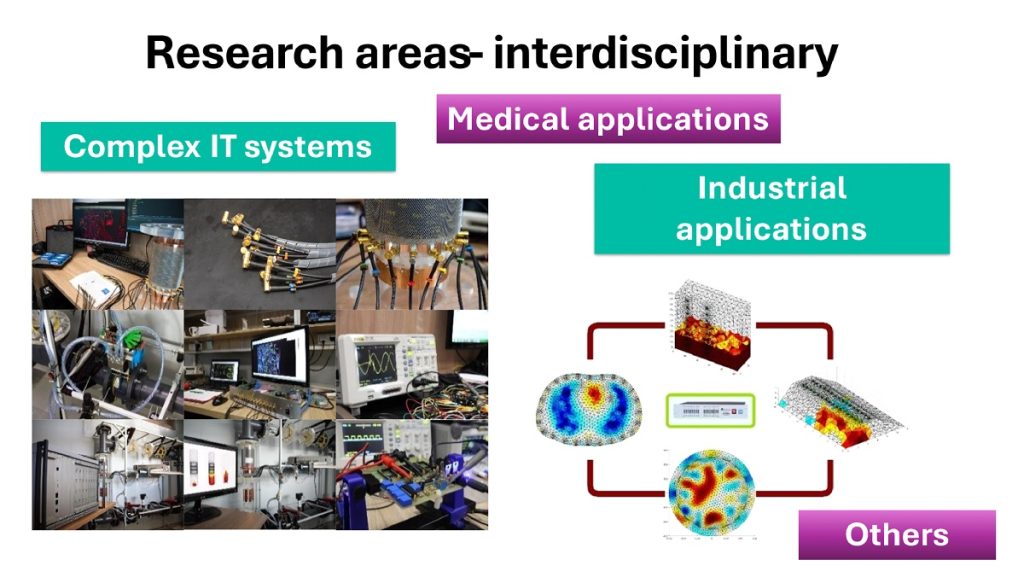
Particular attention was paid to generative AI, which, according to Gartner’s forecasts, will develop in parallel in two directions – through innovations supporting its development and innovations accelerating its implementation in practice.

The presentation also included a review of groundbreaking achievements, including Nobel Prize winners for AI applications in medicine and physics. It emphasized the interdisciplinary approach to the development of deterministic, topological and hybrid algorithms, which have applications in tomography, infrastructure monitoring and e-health systems, among others.
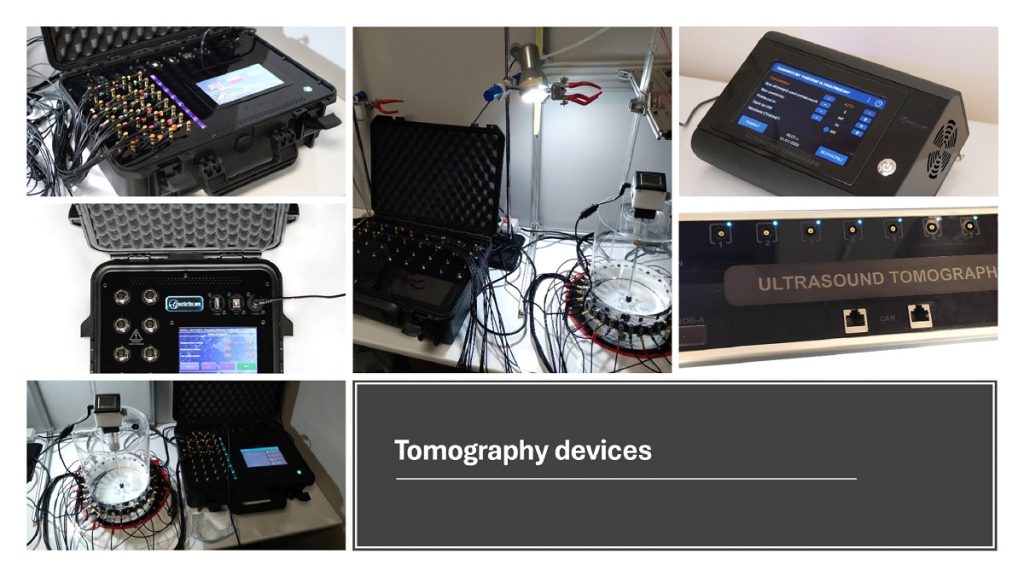
The implementation of AI solutions in industry, marketing and consumer behavior analysis, as well as directions for further research and development work, were also presented.
Dr. Dariusz Wójcik presented a lecture on policy optimization methods in reinforcement learning applied to large language models. Popular algorithms such as PPO and the newly proposed GRPO, which is characterized by a simplified architecture and lower computational requirements, eliminating the need for a critic model, were discussed.

The classification of RL algorithms into model-based and model-free approaches is presented, and the performance of PPO and GRPO on training examples is compared. It is emphasized that GRPO may be the next breakthrough, comparable to the moment of popularization of ChatGPT, opening new possibilities for the development of “thinking” models.
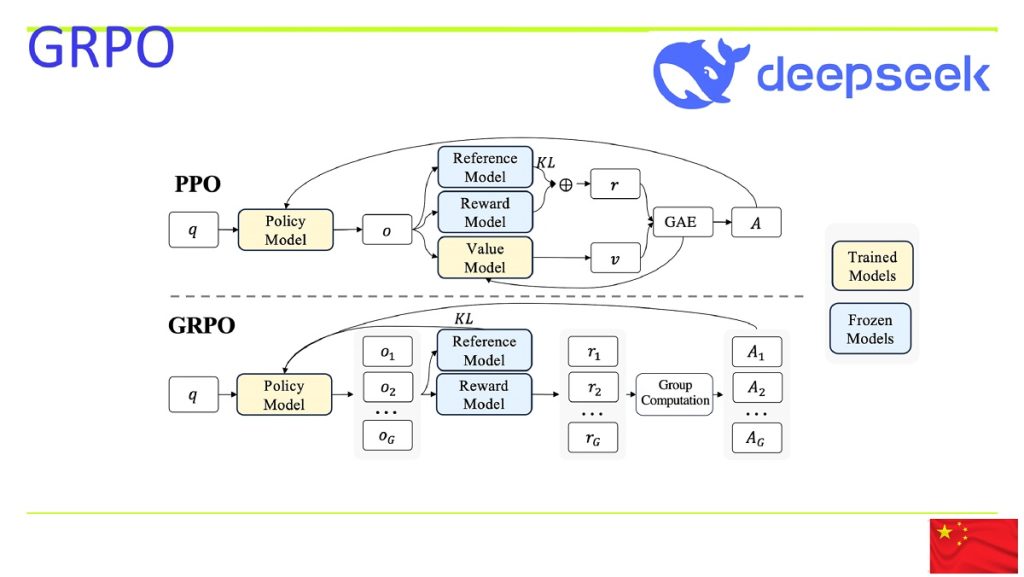
In summary, attention was drawn to the need for further work on eliminating the overthinking phenomenon and further improving the algorithm.
Session 1: Algorithms, Sensors and Tomography Systems
Konrad Niderla presented the application of reinforcement learning methods to optimize the crystallization process, which is widely used in the chemical, pharmaceutical and food industries.
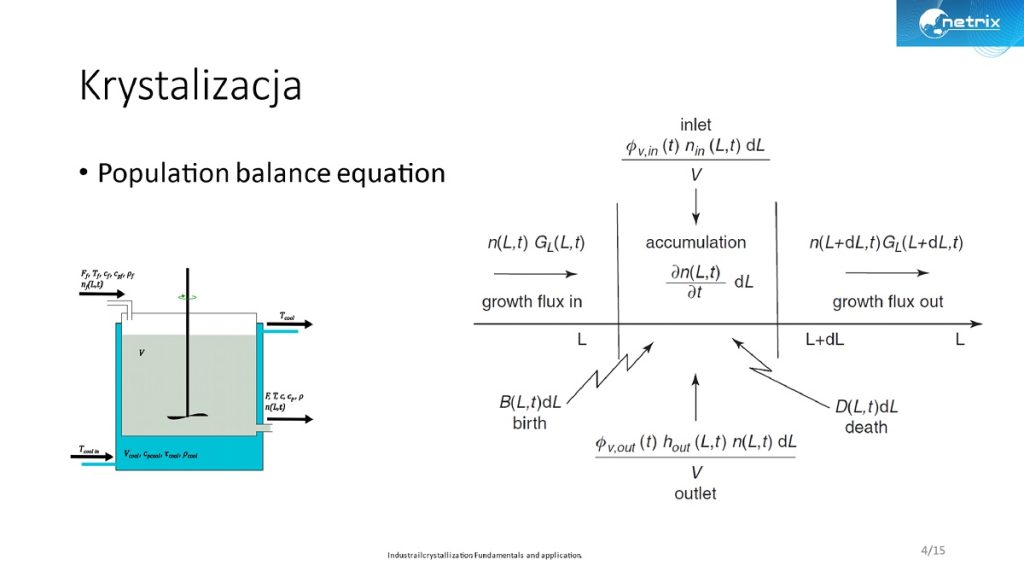
The presentation discussed the use of process tomography for real-time monitoring of process parameters and the implementation of PPO algorithms for automatic control.
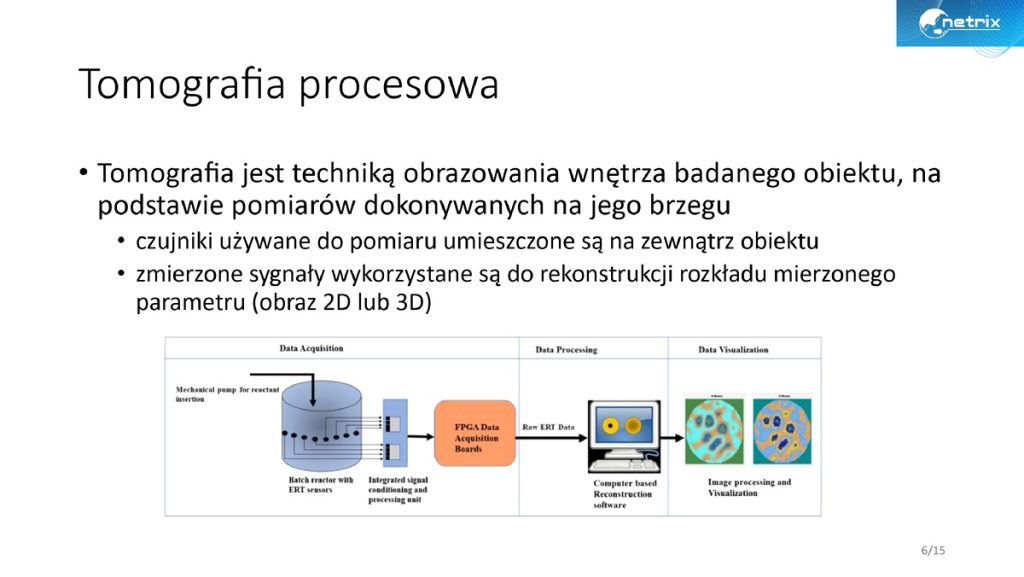
The simulation and test results were presented, which demonstrated the effectiveness of the applied approach in improving the efficiency and quality of the crystallization process by dynamically adjusting the process parameters based on measurement data.
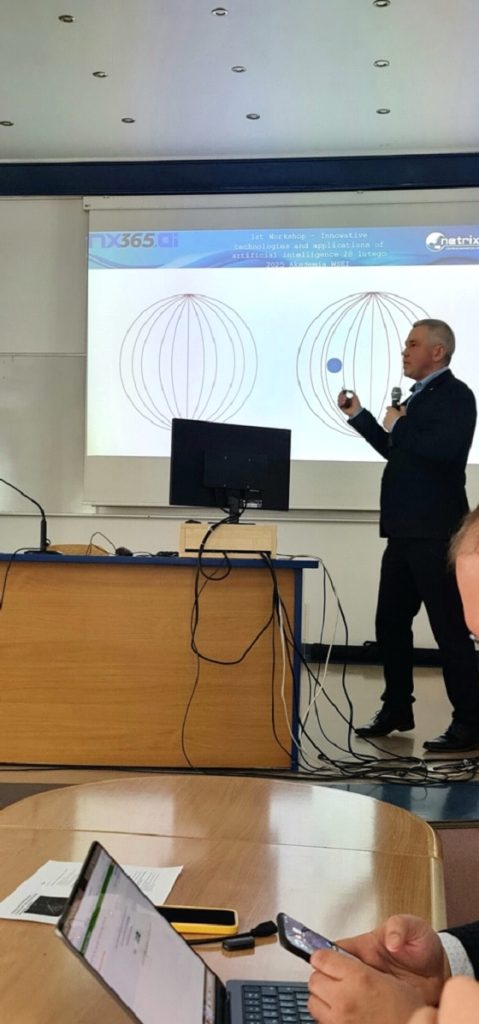
Krzysztof Król presented a comprehensive analysis of image reconstruction methods at EIT. The lecture explained the basic principles of this imaging technique and presented its applications in medicine, industry and geophysics. The criteria for selecting reconstruction algorithms were presented, including quality measures such as RMSE, PSNR, SSIM and Pearson coefficient.
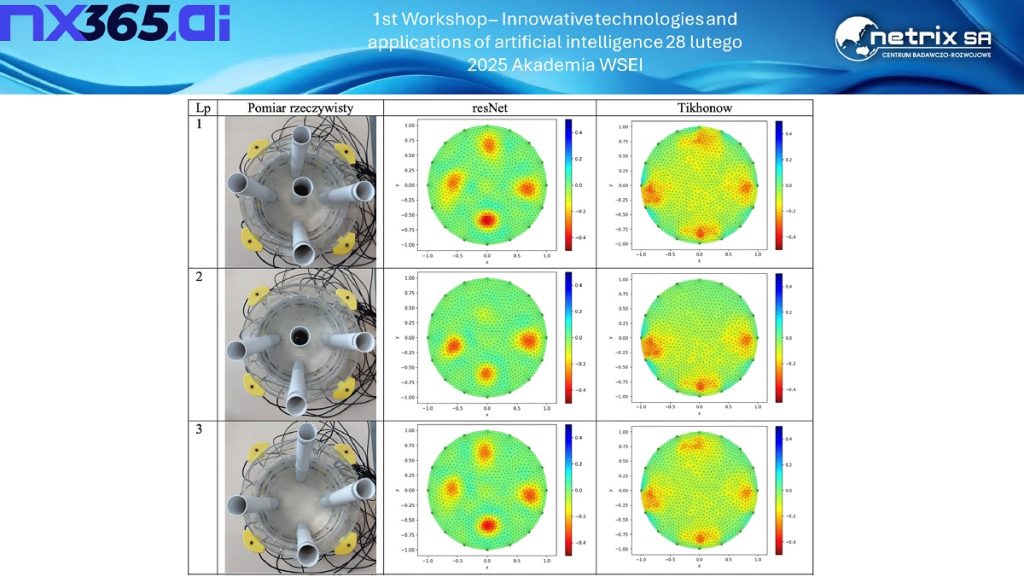
A comparison of different methods, such as ElasticNet, LARS, resNet, and Tikhonov’s method, was conducted. The results showed that the best reconstruction quality was obtained using resNet and Tikhonov’s method, which was confirmed both on simulation data and real experimental measurements.

Barbara Stefaniak presented research on the use of electrical impedance tomography (EIT) in the diagnosis of respiratory diseases. The presentation presented a project of a specialist vest equipped with sensors, enabling the collection of data from the patient’s body surface.

Numerical simulation models of respiratory processes and the application of image reconstruction algorithms and data classification using machine learning methods are discussed.
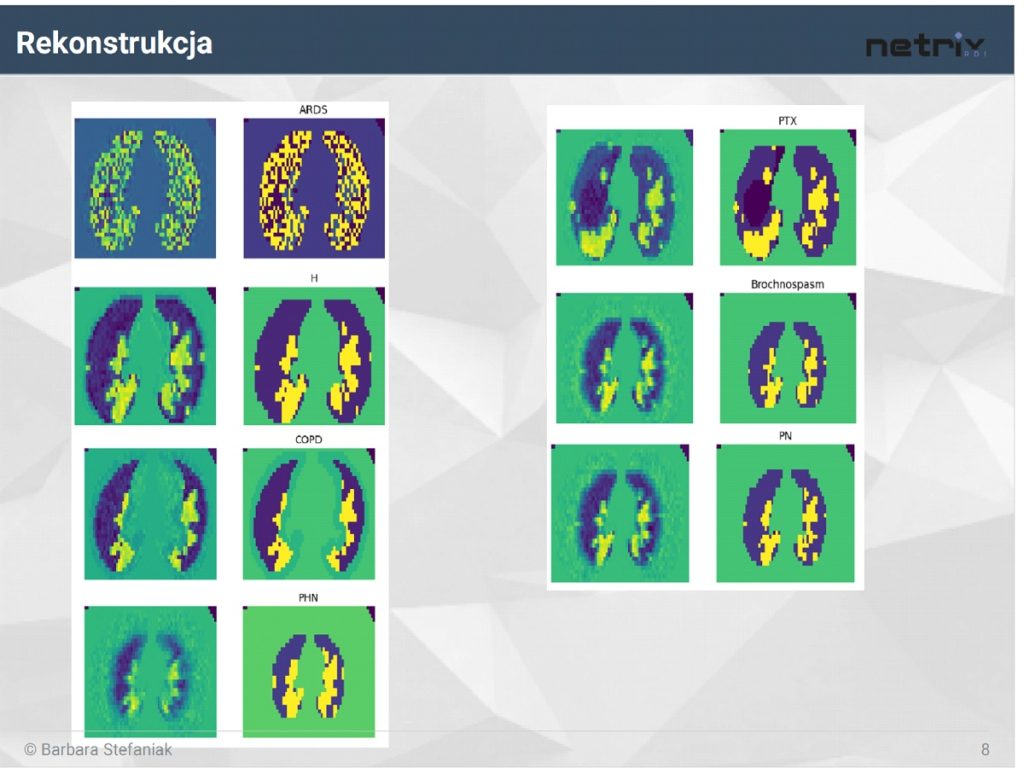
The first results of the reconstruction of impedance distributions in the lungs were presented, which can support early diagnosis of diseases such as COPD or asthma. The project is an example of the practical use of AI and tomographic techniques in modern medical diagnostics.

Michał Styła presented a project of a system for detecting the presence and movement of people in closed spaces using reflection tomography. The aim of the project is to develop a low-cost and energy-efficient radar solution that will enable localization with an accuracy of single centimeters at a distance of up to 10 meters.
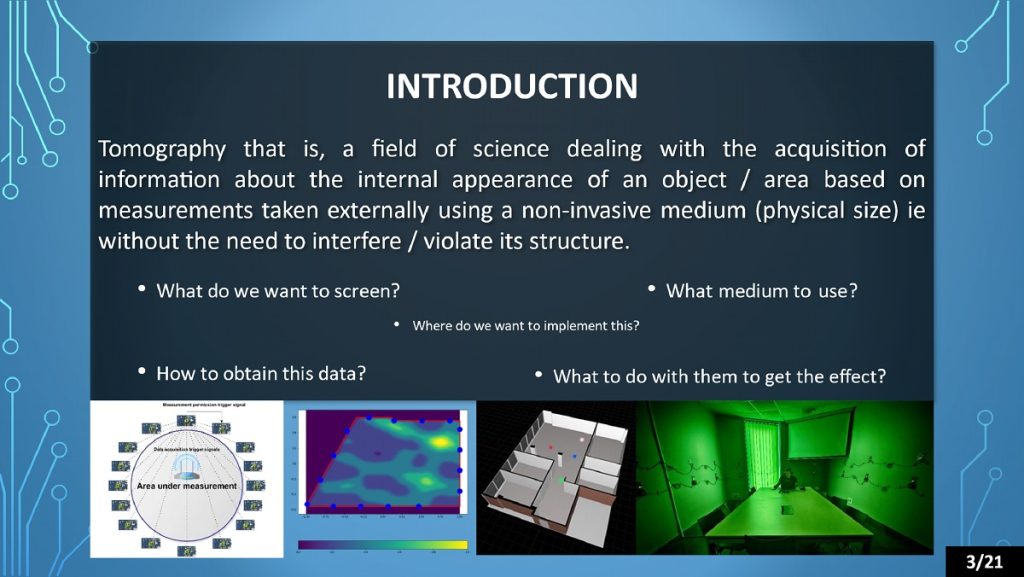
The design aspects of the system were discussed, such as the selection of the radar type, hardware architecture, the selection of data analysis algorithms and the results of the first measurements and simulations.
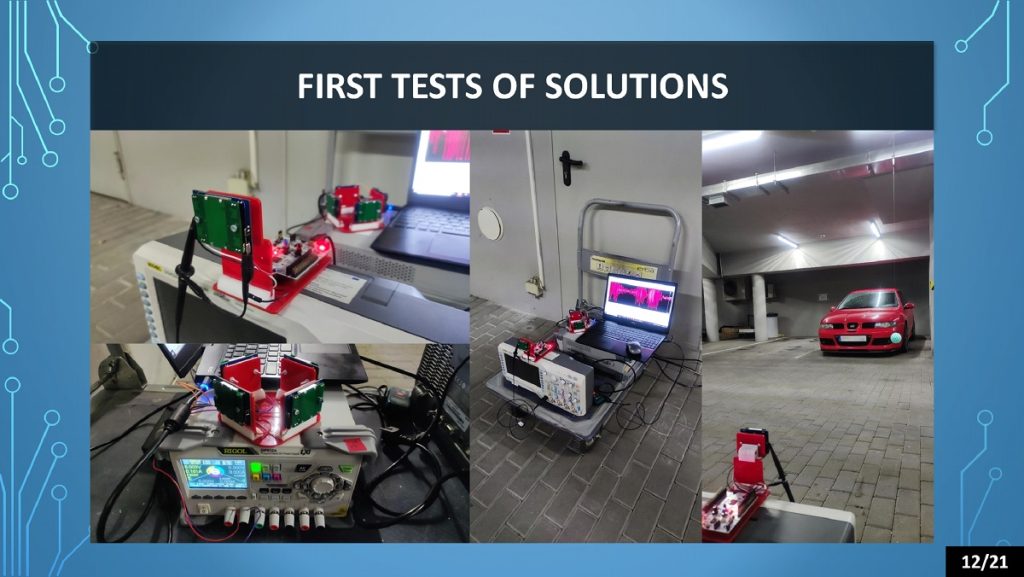
The advantages of the proposed solution over technologies such as GSM, GPS, Wi-Fi or RFID were also presented, indicating its potential applications in security and monitoring systems.
Session 2: Innovative technologies
Paweł Olszewski’s presentation concerned the use of WebAssembly (WASM) to build applications running in a browser, with the simultaneous ability to communicate with hardware.

The limitations of the sandbox environment and ways to bypass them by using interfaces such as WebUSB and WebBluetooth are discussed. An example of a service application that runs in a browser without the need for installation on the user’s operating system is also presented, which significantly simplifies the distribution and implementation of such solutions.
Jakub Szumowski’s presentation introduced the technology of creating graphical interfaces for operator panels built into industrial devices. The capabilities of STM32 microcontrollers equipped with graphic accelerators and the use of the TouchGFX framework, which allows for quick design of interfaces in WYSIWYG mode, were discussed.
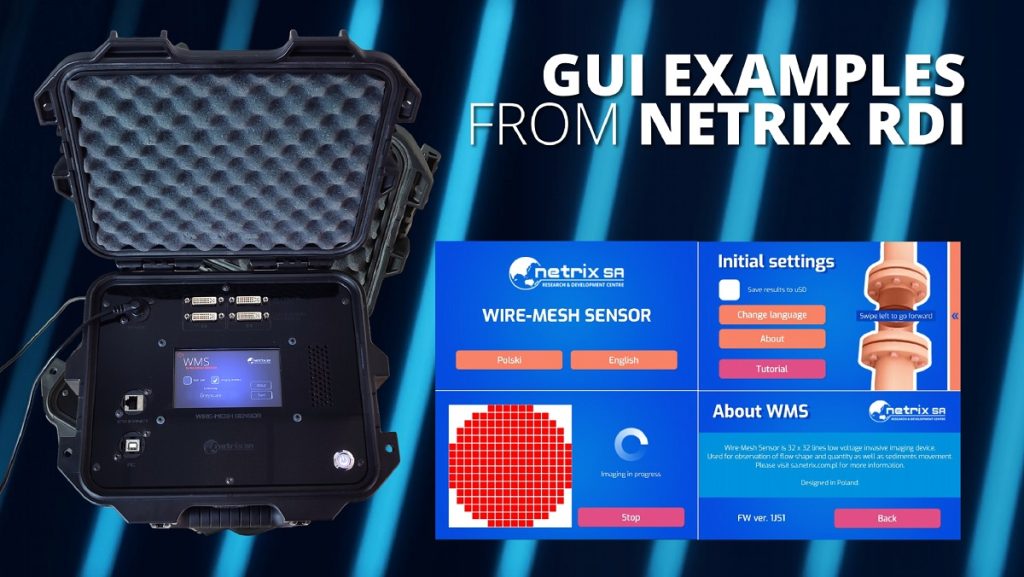
Examples of implementations were presented, including in lifting devices, emphasizing the importance of user comfort and equipment efficiency.
The presentation concerned an indoor localization system based on Ultra-Wideband (UWB) technology. Dominik Gnaś presented the architecture of the system enabling detection and tracking of objects and people in closed spaces.
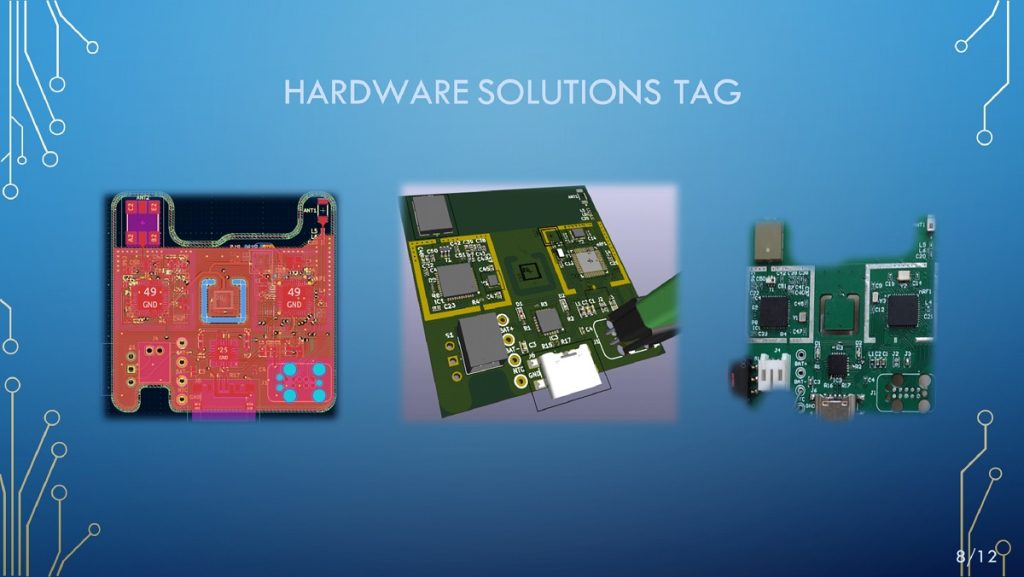
The use of Time of Flight (ToF) method and the design of devices: anchors and markers were discussed. The measurement results showed high precision of the system, which makes it useful in applications related to logistics, security and resource management.
Michał Gołąbek presented a project of a portable ultrasound tomograph for detecting structural defects. The concept of the device, the construction of the prototype and its technical parameters, such as data acquisition speed and support for multiple measurement channels, were presented.
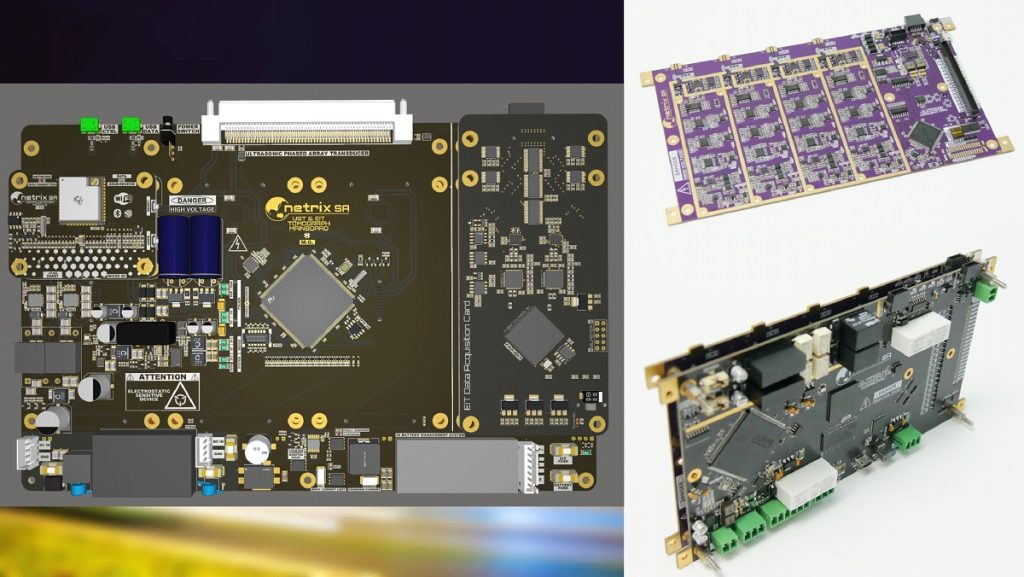
Development stages and market implementation plans were also presented. This solution is used in industry, where mobile and fast diagnostics of materials and structures are required.
Barbara Stefaniak presented application aspects of using a portable ultrasonic flaw detection tomograph. Application software consisting of three modules was presented – Controls, Scan 1D and Scan 2D – enabling device control, measurement and data visualization.
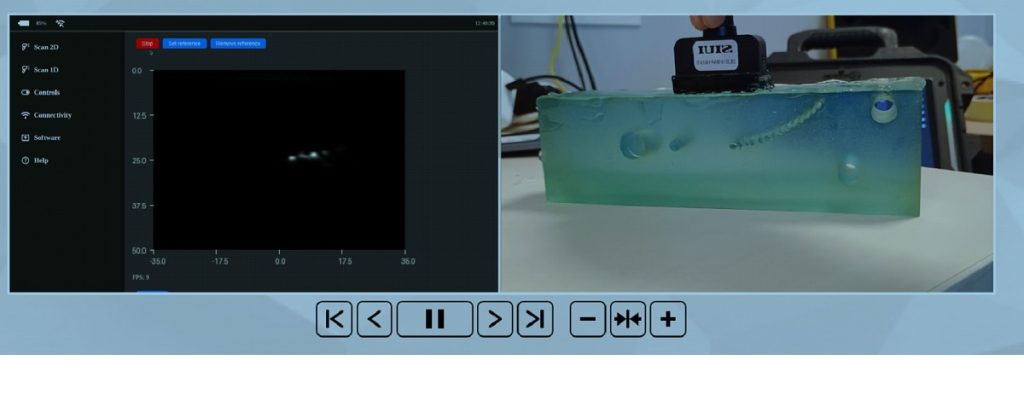
Real-time image reconstruction methods using algorithms based on apodization weights and amplitude compensation are discussed. The presented solution is a modern diagnostic tool for fast and precise defect detection.
Damian Pliszczuk presented the concept of using large language models (LLM) to automate the completion of medical documentation in real time. Integration with the P1 system and the CDA standard was discussed, and a prototype of an application enabling dynamic completion of forms based on the transcription of a doctor’s conversation with a patient was presented.
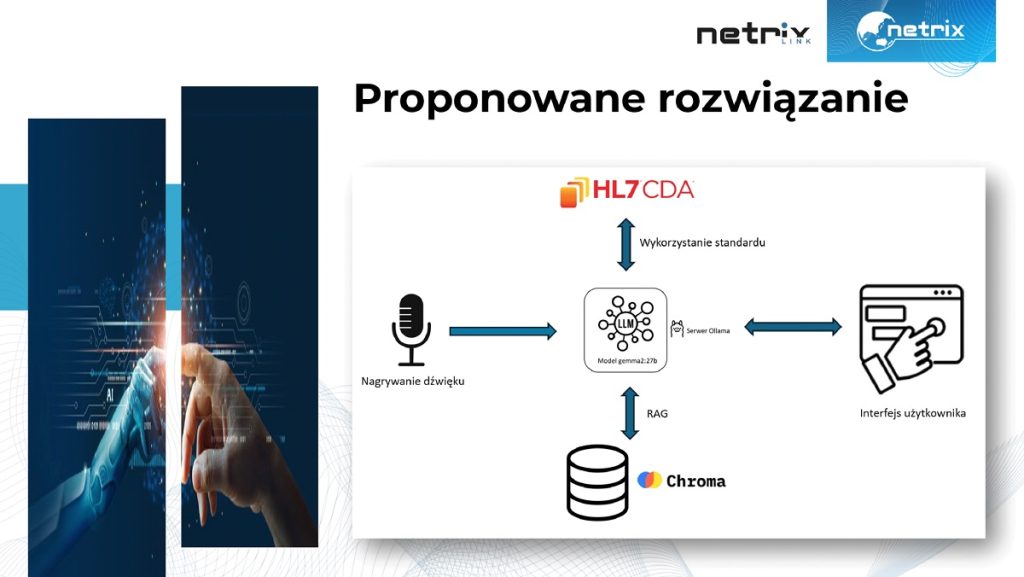
The importance of this solution in the context of relieving medical personnel from administrative duties and improving the quality of patient service was emphasized.
The presentation concerned the application of agent systems to document analysis, with particular emphasis on the analysis of public procurement specifications. Patryk Marek presented the architecture of a solution based on the LangGraph framework, which enables the construction of agents cooperating in the extraction of knowledge from unstructured documents.

The techniques of semantic segmentation and parallel information processing in the MapReduce model are discussed, as well as the prospects for system development towards building relational knowledge bases.

Dr. Przemysław Adamkiewicz presented an overview of radio technologies used in intelligent location systems. Triangulation methods, tomographic and radar imaging, and the use of UWB technology were discussed.
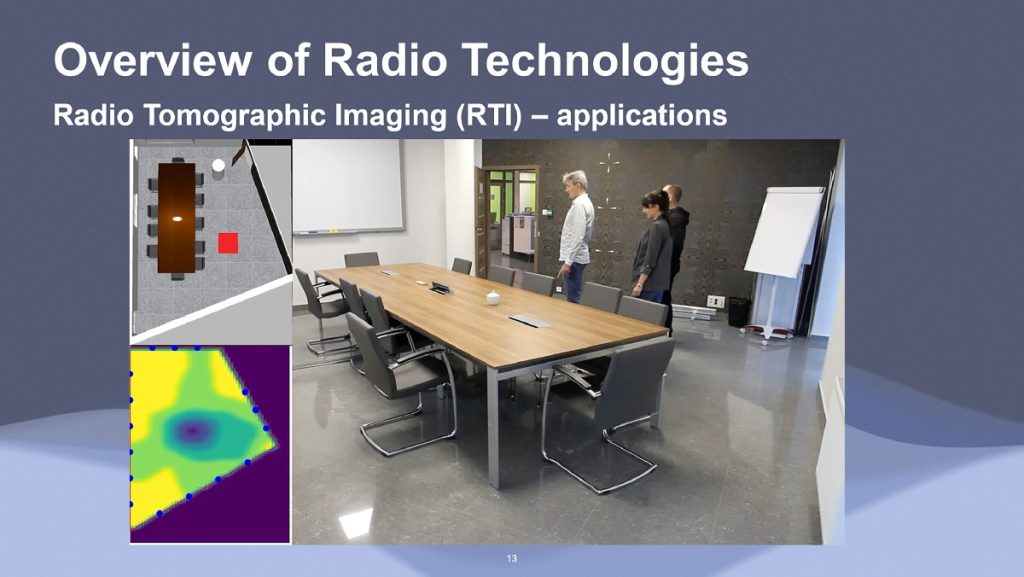
The presentation highlighted the importance of these solutions in logistics, healthcare, transportation and smart buildings. It also pointed out the challenges related to the integration of artificial intelligence and the future of the development of positioning systems.

The workshops culminated in a summary session, during which participants had the opportunity to exchange observations, share experiences and propose directions for further action and cooperation. The event was met with great interest from both the scientific and industrial communities, confirming the need to organize subsequent editions that will continue the mission of integrating science and business around the challenges related to the development of artificial intelligence and information technologies.

